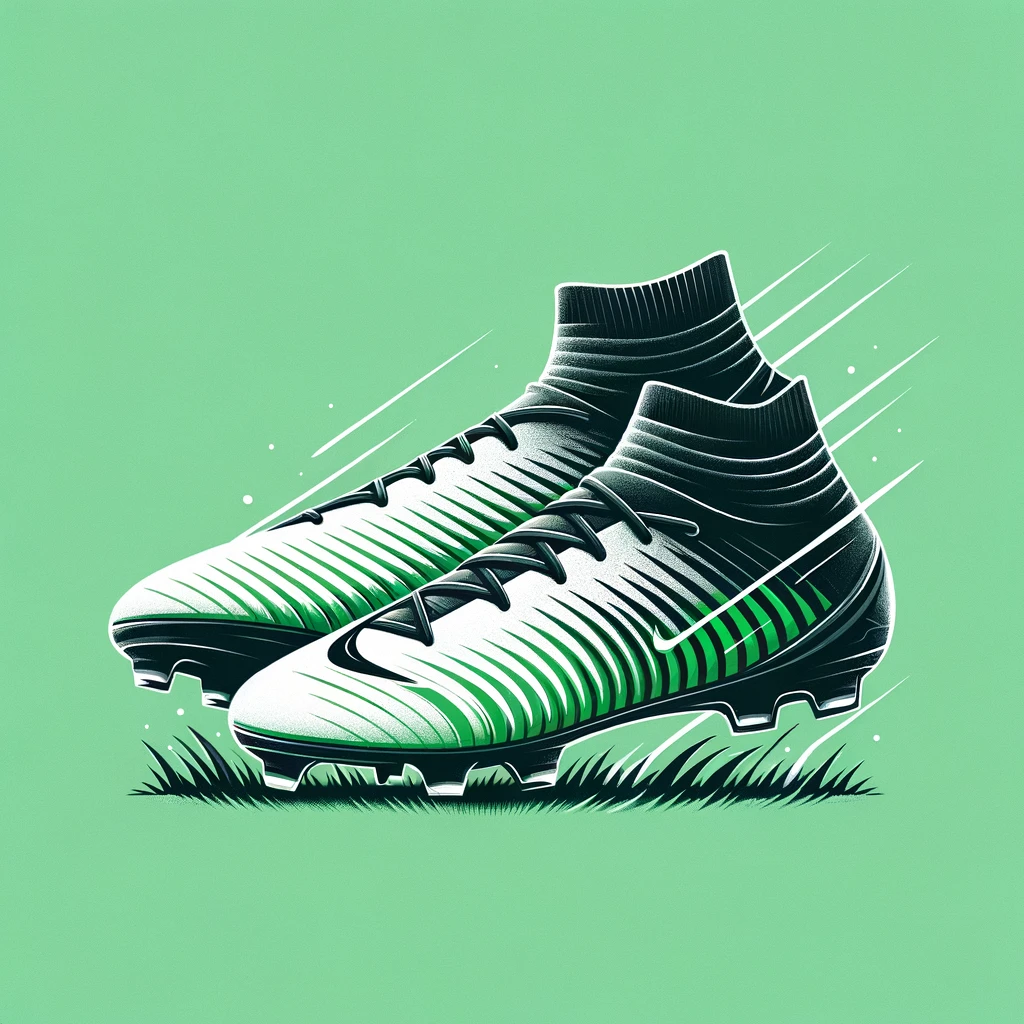New soccer cleats can transform your game, offering better control, traction, and protection. However, stiff, new cleats often require a break-in period to fit comfortably. This guide will walk you through effective methods to break in your soccer cleats, ensuring they’re game-ready in no time.
Introduction
Soccer cleats are designed to be snug to provide precise control over the ball, but this can sometimes lead to discomfort in new pairs. Breaking in your cleats is crucial for comfort and performance, and it doesn’t have to be a lengthy or painful process.
Essential Tips Before You Start
- Choose the Right Size: Properly fitting cleats are crucial. They should be tight but not uncomfortably so, with about a thumb’s width of space in the front.
- Know Your Materials: Leather cleats tend to stretch and conform to your feet, while synthetic materials offer less give but greater durability.
How to Break in Soccer Cleats Effectively
Wear Them Around the House
Start by wearing your new cleats around the house for short periods. This helps the material start to mold to the shape of your feet without the pressure of a full practice or game.
Use Thick Socks
Wearing thick socks or multiple pairs can help stretch the cleats more effectively during the break-in period. Just be sure not to overstretch them.
Moisture is Key
For leather cleats, applying a small amount of water to the upper before wearing them can help soften the material. Do not soak them; just dampen them. This method is not recommended for synthetic cleats.
The Freezer Trick
Fill two sealable bags with water, place them in the cleats, and then freeze them. As the water freezes and expands, it gently stretches the cleats. Be cautious with this method to avoid damaging the cleats.
Flex and Bend
Manually flexing and bending the soles of your cleats can help soften them up before wear. Be gentle to avoid damaging the structure of the cleats.
Use a Shoe Stretcher
If the cleats are uncomfortably tight, a shoe stretcher can be used specifically on the areas that feel snug. This is a more controlled method to expand the material without risking overstretching.
Gradual Increase in Use
Gradually increase the time you spend in your cleats. Start with short walks or jogs, then practice sessions before wearing them in a game.
What to Avoid
- Excessive Heat: Avoid using direct heat (like hairdryers) to soften your cleats, as this can damage the material and adhesive.
- Wearing Wet Cleats: Wearing them wet for long periods can lead to damage and odor. Let them dry naturally if they become wet.
Frequently Asked Questions (FAQ)
How long does it take to break in new soccer cleats?
The time it takes to break in new soccer cleats can vary based on the material and how often you wear them. Typically, a few days to a couple of weeks should be enough if you follow the right break-in methods.
Can I play in a game with new cleats right away?
It’s not recommended to play in a game with brand-new cleats without breaking them in first. Doing so can lead to blisters and discomfort. If possible, gradually increase their use in training sessions before a game.
Is it better to break in cleats naturally or use quick methods?
While quick methods can help, breaking in cleats naturally through wear is generally safer and more effective for achieving a custom fit without damaging the cleats.
Will breaking in cleats make them bigger?
Properly breaking in cleats can make them feel more comfortable and conform to your foot’s shape, but it won’t significantly increase their size. Ensure you start with the correct size for the best fit.
Can I use these methods for all types of soccer cleats?
Most methods are safe for both leather and synthetic cleats, but always consider the material. For instance, applying moisture can benefit leather cleats but might not be suitable for synthetics.
What if my cleats still feel uncomfortable after breaking them in?
If your cleats still don’t feel right after breaking them in, they might not be the right fit for your foot shape, or the size could be off. It’s also possible that a different style or brand could offer a better fit.
How can I prevent blisters while breaking in new cleats?
Wearing thick socks or specialized blister-preventing socks can help reduce friction and pressure points when breaking in new cleats.
Conclusion
Breaking in your soccer cleats properly can enhance your comfort and performance on the field. With patience and the right techniques, you can ensure your new cleats feel like an extension of your feet in no time.

